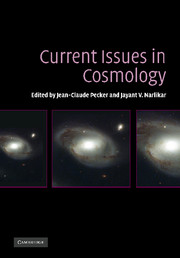Book contents
- Frontmatter
- Contents
- List of contributors
- Preface
- Part I Observational facts relating to discrete sources
- 1 The state of cosmology
- 2 The redshifts of galaxies and QSOs
- 3 Accretion discs in quasars?
- Part II Observational facts relating to background radiation
- Part III Standard cosmology
- Part IV Large-scale structure
- Part V Alternative cosmologies
- Part VI Evidence for anomalous redshifts
- Part VII Panel discussion
- Index
2 - The redshifts of galaxies and QSOs
Published online by Cambridge University Press: 15 December 2009
- Frontmatter
- Contents
- List of contributors
- Preface
- Part I Observational facts relating to discrete sources
- 1 The state of cosmology
- 2 The redshifts of galaxies and QSOs
- 3 Accretion discs in quasars?
- Part II Observational facts relating to background radiation
- Part III Standard cosmology
- Part IV Large-scale structure
- Part V Alternative cosmologies
- Part VI Evidence for anomalous redshifts
- Part VII Panel discussion
- Index
Summary
Introduction
Redshifts are the lifeblood of cosmology. Until the demonstration that spiral nebulae are external galaxies, and the 1929 discovery by Hubble (Hubble 1929) that there is a correlation of the redshifts with apparent brightness, it was thought that the Universe was static. This is indeed why Einstein put a cosmological constant in his equations. After it appeared that Hubble's result was observational confirmation of the Friedmann–Lemaitre solution to Einstein's equations, it was generally accepted that the Universe is expanding.
Thus from 1930 onwards, there was a strong belief that redshifts could only be due either to Doppler motions away from the observer, as they had been found long ago in galactic stars, or if they were large and systematic they must be shifts due to the expansion of the Universe, and therefore they could be used for cosmological investigations.
Over the years considerable glamour has become attached to the study of large redshifts. This is because they are the only direct tools that give us some measure of what happened in the past, and if we can determine the rate of the expansion Ho we can get some idea of the time scale since the beginning ∼H, i.e., a time scale for the Universe. In this talk we want to give a brief survey of the way that the measurements of redshifts have gone over the last 75 years.
- Type
- Chapter
- Information
- Current Issues in Cosmology , pp. 17 - 36Publisher: Cambridge University PressPrint publication year: 2006
- 1
- Cited by



